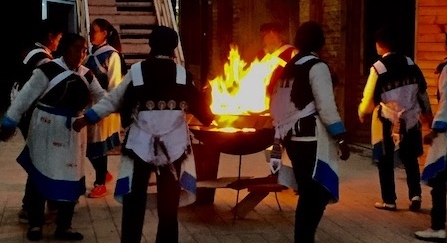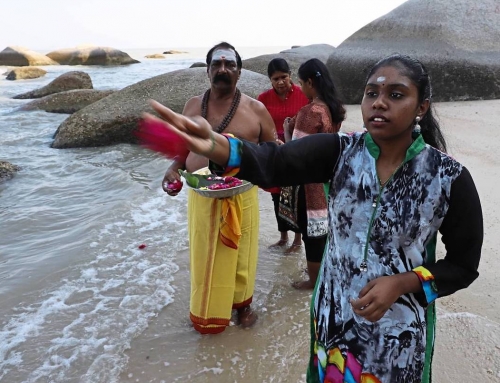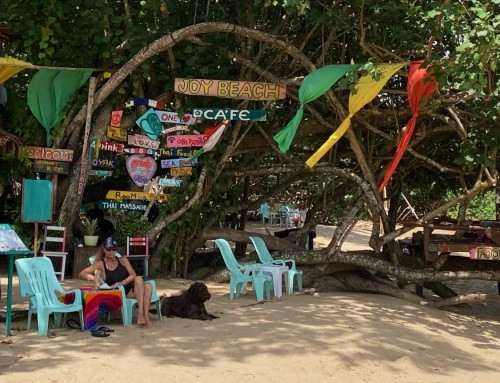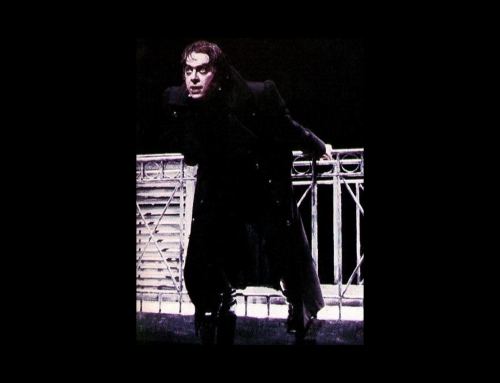
Traditional “Moon and Stars” costume

Ancient Nakhi pictographic script
The Nakhi people (pron. Na’hee) are one of the 56 officially recognised groups of minority peoples in China. The Han Chinese pronounce their name Na’xi as in ‘nashi’ since there is no sound in mandarin to deal with the ‘kh’. Today there are roughly 300,000 of them living primarily in south west Yunnan around the district of Lijiang as well as in southern Sichuan. It is thought they originally migrated from the north west of China over 1000 years ago.

Typical Nakhi architecture
The thing that makes them interesting to me is their rich and fascinating ancient Dongba culture. They have their own architecture, dress, music, dancing and language, of which the written pictographic form is one of the last remaining in the world. They also practice a form of buddhism mixed with animism, kept alive by the remaining descendants of the Shaman priests who were not wiped out during the cultural revolution.
The ancient Nakhi had an inherent respect for nature, the land and especially water, usually sourced from natural springs fed by melting snow. They had a simple but wise system of water usage in a structure called “the three wells”, which is still in use in some villages today.

The very dangerous pony trails of the Tea Horse Road
Aside from being subsistence farmers, the ancient Nakhi were also traders. The Southern Tea Horse Road (70 AD to 1965) is famous for its sheer enterprise, danger and cultural legacy. Pony caravans would set out with tea from Pu’er in the south of Yunnan, through Lijiang and into the Tibetan highlands, as far as Nepal. Some of the trails were incredibly dangerous, with precipitous cliffs and the constant risk of being attacked by bandits. Tibetan Yak butter tea exists today largely due to the Nakhi.
A vast majority of the Nakhi people have the family name ‘He’. Several centuries ago, in the best interests of survival in the midst of more powerful kingdoms, they acquiesced to the stronger northern Emperor at the time, Zhu Yuanzhang. They demonstrated their loyalty to him by sending several hundred of their best local horses to the palace as a gift.

Three wells; drinking, cleaning vegetables, washing then into the river

Waiting for the next tourist
The Emperor became their protector. At that time they only had very simple one-word names and so emperor Zhu gave the newly appointed governing officials and local people the names of Mu and He (pron. her) respectively. Sadly many of the Mu descendants, members of the Nobility, were killed or simply “Disappeared” during the cultural revolution.
In the three or so years I spent in Lijiang I came to know several delightful ‘He’ families including Lushan and her husband Achun, who own a restaurant in Yu Hu, and my Mandarin language teacher Rumi, who tried against the odds to teach me some form of conversational Chinese. I was also privileged to meet a local Nakhi scholar, Master Yang or ‘Yan lao Se’ in Nakhi language. More about Master Yang later.

Musicians in Baisha, with my brother Mark
Lushan He, aside from running a great restaurant, is a walking encyclopaedia, with great knowledge of the Nakhi who live around the area of Lijiang. She is also the curator of the Lijiang traditional Nakhi orchestra. Every night she dresses in traditional costume and presents the 30+ strong members of the orchestra to mostly tour group audiences, keen to learn about their history. Nakhi music which is over 1000 years old, is one of the three ancient styles that form the basis of modern Chinese classical music.

The wonderfully charismatic Lushan He
The Nakhi embraced the Han empire centuries ago and are more inclined to feel part of greater China than say the Tibetans or the Miao.
I fear the Nakhi culture will disappear with the next generation, as the younger children fail to learn the language and customs of their parents and grandparents.
If nothing else, the process of Han Chinese homogenisation, both subtle and overt will also put an end to it. But then, as in many developing countries, the central government sees it as being in the best interest of growing a strong and “modern” China.
for more photos, click here to have a look under the Galleries tab.





